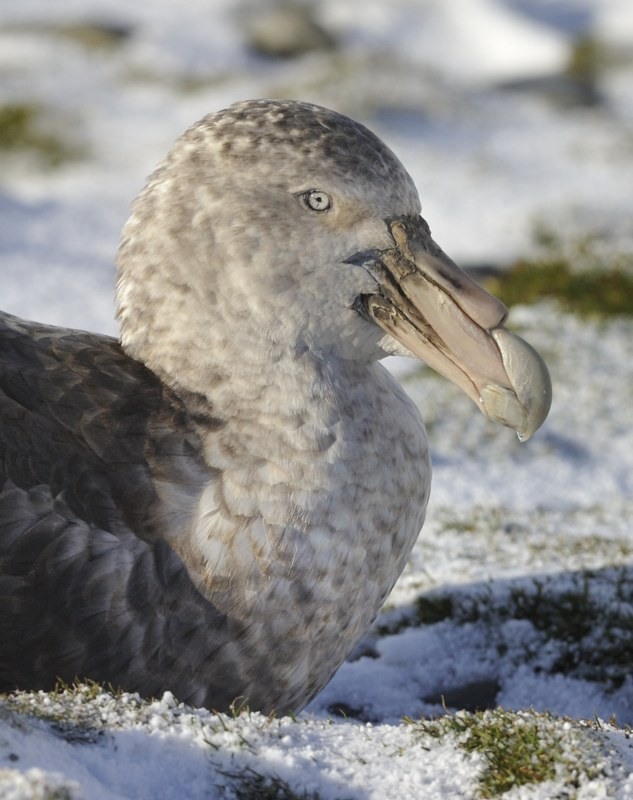Dimas Gianuca (Environment and Sustainability Institute, University of Exeter, Penryn, UK) and colleagues have published open access in the Journal of Animal Ecology on sex‐specific differences in the demography of Northern Macronectes halli and Southern M. giganteus Giant Petrels that breed sympatrically at South Georgia (Islas Georgias del Sur)*.
The paper’s abstract follows:
“· Many animal taxa exhibit sex‐specific variation in ecological traits, such as foraging and distribution. These differences could result in sex‐specific responses to change, but such demographic effects are poorly understood.
- · Here, we test for sex‐specific differences in the demography of northern (NGP, Macronectes halli) and southern (SGP, M. giganteus) giant petrels – strongly sexually size‐dimorphic birds that breed sympatrically at South Georgia, South Atlantic Ocean. Both species feed at sea or on carrion on land, but larger males (30% heavier) are more reliant on terrestrial foraging than the more pelagic females. Using multi‐event mark‐recapture models, we examine the impacts of long‐term changes in environmental conditions and commercial fishing on annual adult survival and use two‐sex matrix population models to forecast future trends.
- · As expected, survival of male NGP was positively affected by carrion availability, but negatively affected by zonal winds. Female survival was positively affected by meridional winds and El Niño–Southern Oscillation (ENSO), and negatively affected by sea ice concentration and pelagic longline effort. Survival of SGPs did not differ between sexes; however, survival of males only was positively correlated with the Southern Annular Mode (SAM).
- · Two‐sex population projections indicate that future environmental conditions are likely to benefit giant petrels. However, any potential increase in pelagic longline fisheries could reduce female survival and population growth.
- · Our study reveals that sex‐specific ecological differences can lead to divergent responses to environmental drivers (i.e. climate and fisheries). Moreover, because such effects may not be apparent when all individuals are considered together, ignoring sex differences could underestimate the relative influence of a changing environment on demography.”

A Southern Giant Petrel on South Georgia (Islas Georgias del Sur)*, photograph by Kirk Zufelt
Reference:
Gianuca, D., Votier, S.C., Pardo, D., Wood, A.G., Sherley, R.B., Ireland, L., Choquet, R., Pradel, R., Townley, S., Forcada, J., Tuck, G.N. & Phillips, R.A. 2019. Sex‐specific effects of fisheries and climate on the demography of sexually dimorphic seabirds. Journal of Animal Ecology doi.org/10.1111/1365-2656.13009.
John Cooper, ACAP Information Officer, 30 July 2019
*A dispute exists between the Governments of Argentina and the United Kingdom of Great Britain and Northern Ireland concerning sovereignty over the Falkland Islands (Islas Malvinas), South Georgia and the South Sandwich Islands (Islas Georgias del Sur y Islas Sandwich del Sur) and the surrounding maritime areas.

 English
English  Français
Français  Español
Español